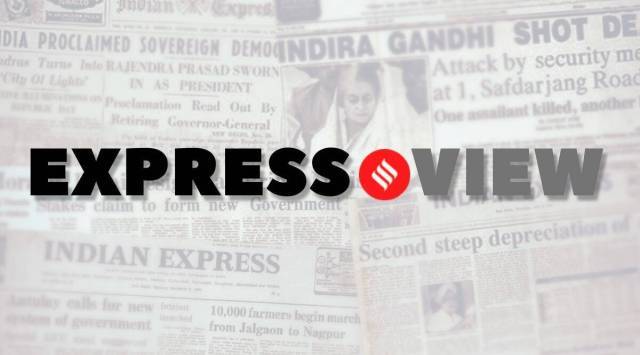Opinion Express View on INDIA’s Mumbai meeting: Plus and minus
It takes a step forward on jointness. But it still lacks shared and affirmative ideas
 The sense that emerges from Mumbai, as it did from Patna and Bengaluru, is that the alliance is looking to frame its campaign in negative terms: It is asking the electorate to vote against Narendra Modi’s BJP.
The sense that emerges from Mumbai, as it did from Patna and Bengaluru, is that the alliance is looking to frame its campaign in negative terms: It is asking the electorate to vote against Narendra Modi’s BJP. The third meeting of INDIA, the 28-party Opposition alliance, in Mumbai ended with a commitment, a caveat and the announcement of committees. The commitment is that these parties will contest the 2024 Lok Sabha polls together and field joint candidates.
The caveat is that they will do so “as far as possible”. A national alliance that is largely made of parties rooted in regional identities such as the DMK and Jharkhand Mukti Morcha or parties with regional influence such as the TMC and NCP is bound to face challenges. There are internal contradictions and rivalries – such as between the CPM and Congress and TMC in Bengal or the CPM vs Congress in Kerala — that make nationwide seat-sharing arrangements an uphill task. To navigate the way forward, the bloc has announced the setting up of a coordination committee. In addition, there are committees to oversee rallies and for media and social media campaigns. But while, for the alliance, Mumbai is certainly a step forward from Patna and Bengaluru, a long distance remains to be covered.
The show of unity in Mumbai will be tested by the arduous seat-sharing negotiations that lie ahead. The real challenge for INDIA, however, is to recognise that adding up of political arithmetic is no substitute for a joint platform that is based on shared ideas. After the two-day meeting in Mumbai, Rahul Gandhi said that “this stage represents 60 per cent of the Indian population. If the parties on this stage unite, it is impossible for the BJP to win an election.” The figure of 60 per cent is broadly correct, but it does not speak of the full picture. It does not necessarily mean that the non-BJP vote is an anti-BJP vote or that one Opposition party’s vote is transferable to the other. For instance, there is no reason to believe that a Samajwadi Party supporter will seamlessly back the AAP candidate, or that a CPM voter in West Bengal will easily vote for the joint Opposition candidate from the Congress or TMC. This oversimplification of political-electoral math and excessive reliance on a mechanical adding up of vote-shares evades a fundamental and yet unanswered question: What does INDIA stand for, really?
The sense that emerges from Mumbai, as it did from Patna and Bengaluru, is that the alliance is looking to frame its campaign in negative terms: It is asking the electorate to vote against Narendra Modi’s BJP. Its articulation of what is at stake in 2024 follows from this negative pitch and it is apocalyptic — it paints a picture of endangered secularism, democracy, federalism and fundamental rights. What is missing, still, is a big affirmative idea that is being offered by the Opposition alliance. As things stand, therefore, this narrative lends weight to the ruling party’s allegation that INDIA has come together merely against the PM, not for the people. In the months ahead, the Opposition alliance needs to outline what it stands for — not just who it stands against. That would give the idea of Opposition unity substance and meaning.






